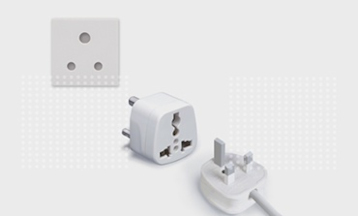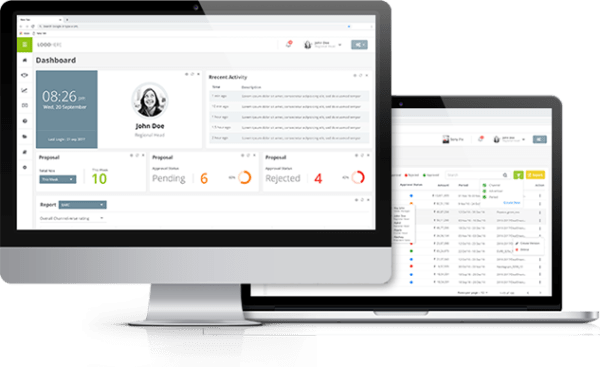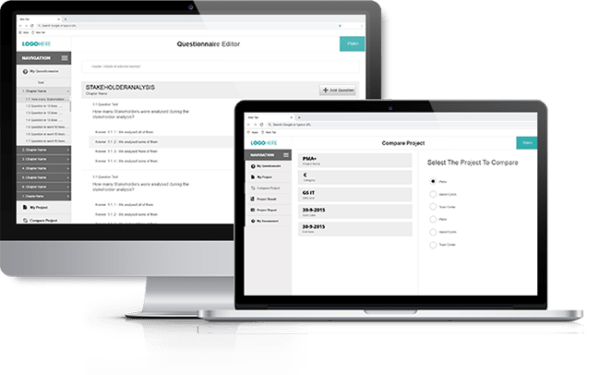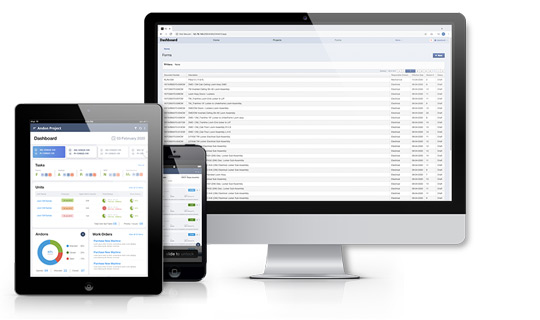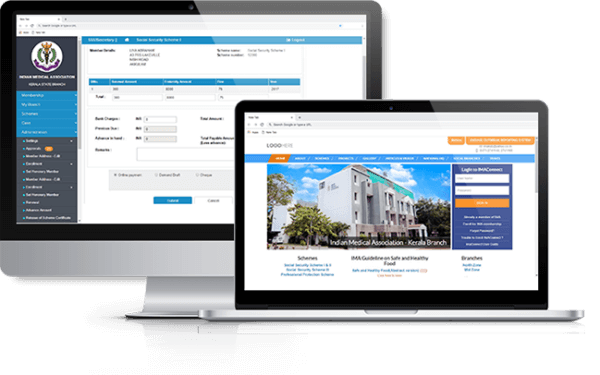Data migration – the process of moving digital information from one location to another – is a critical task for many organizations. Whether it’s moving data from hard drives to the cloud, updating legacy systems, or transferring data between software applications, the process can sometimes be complex and fraught with risks, including human error and downtime.
Enter RPA: The Game-Changer
Robotic Process Automation (RPA) is a technology that uses software robots or “bots” to automate repetitive and rule-based tasks. These bots can mimic human interactions with digital systems, making them ideal for tasks such as data entry, data extraction, and data migration. RPA offers a transformative solution, redefining the efficiency, accuracy, and cost-effectiveness of data migration processes.
The Need for Data Migration
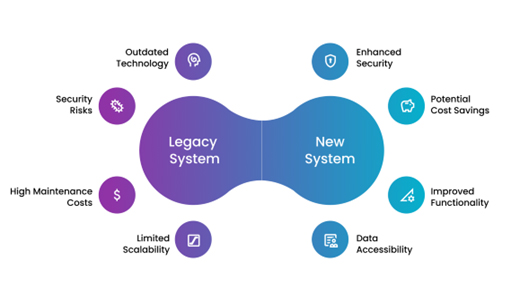
Data migration involves transferring data from old systems to new ones. This process is critical for organizations that need to:
• Upgrade to newer technologies
• Consolidate data from multiple sources
• Improve data accessibility and usability
• Comply with regulatory requirements
Benefits of RPA in Data Migration
• Speed: RPA automates data entry, freeing you up for more strategic tasks and accelerating your migration timeline.
• Cost-effective: RPA eliminates the need for extra manpower, reducing the overall cost of your project.
• Scalability: Effortlessly handles large data volumes, making it perfect for massive data migrations.
• Risk Mitigation: Prompt identification and resolution of issues minimize migration risks.
Step-by-Step Process of RPA in Data Migration
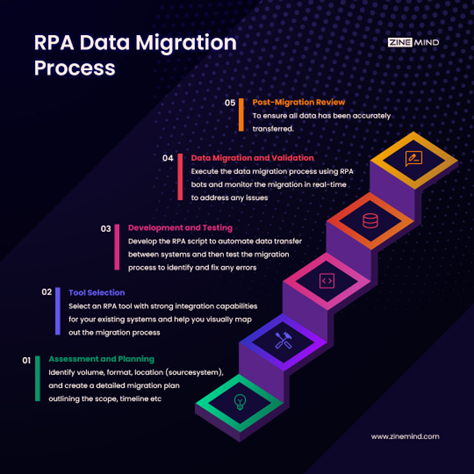
RPA can be your secret weapon for any data migration project, big or small.
Step #1: Assessment and Planning
The first step is to identify the data you need to migrate, its source location, and the target system. Create a detailed roadmap outlining the migration steps, timeline, resources, and risk mitigation strategies. Identify key stakeholders and then create a detailed migration plan. It is also important to analyze the structure and accessibility of both your source data and the target system. This helps determine the feasibility of RPA integration and potential challenges.
Step #2: Tool Selection and Design
Research and select an RPA tool that aligns with your technical expertise and budget. Some popular RPA platforms include UiPath, Automation Anywhere, and Blue Prism. Design detailed workflows outlining the steps each RPA bot will take to automate specific tasks within the data migration process. Determine the resources needed for RPA development, deployment, and ongoing maintenance. This could include internal development teams, RPA specialists, or outsourced services.
Step #3: Development and Testing
Development
Collaborating with your RPA specialists, develop bots that mimic the identified tasks in your data migration plan. Each bot will have specific instructions and functionalities tailored to automate a particular aspect of the migration process. The bots should seamlessly interact with both the source and target systems involved in the data migration. This might involve:
• Integrating with APIs (Application Programming Interfaces) to access and manipulate data within the systems.
• Using screen scraping techniques to extract data from user interfaces, if APIs aren’t available.
Create and configure RPA bots to handle data extraction, transformation, and loading. Additionally, ensure bots are programmed to handle exceptions and errors.
Testing
Thorough testing minimizes bugs and errors in your RPA bots, leading to a more reliable and accurate data migration.
• Unit Testing: This involves simulating their behavior with sample data to ensure they function as intended and produce accurate outputs.
• Integration Testing: Next comes integration testing. Here, you test how your individual RPA bots interact with each other and with the source and target systems. This ensures seamless data flow.
• End-to-end Testing: Finally, it’s time for the ultimate test: end-to-end testing. You simulate the complete data migration process using your RPA bots and real data sets. This allows you to identify any last-minute issues and ensure the entire workflow functions flawlessly before deployment.
Step #4: Data Migration and Validation
Create a complete backup of your source data system before initiating the migration. This acts as a safety net in case of unforeseen issues. If your migration involves downtime for the source system, develop a clear cutover plan. This includes notifying users, scheduling downtime windows, and outlining the process for switching to the new system. Initiate the data migration process. This may involve:
• Extracting data from the source system
• Formatting and transforming data as needed
• Validating data integrity
• Loading data into the target system
Throughout the migration, perform periodic data validation checks. This involves comparing the data in the source and target systems to ensure accuracy and address any issues promptly.
Step #5: Post-Migration Review
Once the data migration is complete, run additional tests on the target system. Verify that the migrated data functions correctly and all functionalities are operational. In case of unexpected issues, revisit your rollback plan. Ensure it’s still up-to-date and ready to be implemented if necessary. Once everything is confirmed as functional, it’s time for go-live! Your data migration project using RPA is complete.
Use Case
Imagine you’re a fast-growing e-commerce company. Your current customer relationship management (CRM) system is struggling to handle your ever-increasing customer base and manually transferring thousands of customer records, including names, addresses, purchase histories, and contact information can be challenging and prone to errors.
The RPA Solution:
RPA bots are developed to automate these kinds of data extraction and transfer processes. A designed and automated rules-driven migration process mut be present for all the three steps: extracting, transforming, and loading.
RPA can:
• Log in to the old CRM system.
• Navigate specifically to access customer data.
• Extract relevant customer information (names, addresses, purchase history, etc.)
• Format the data for seamless import into the new CRM.
• Validate data integrity (check for missing values and inconsistencies) before transfer.
• Upload the validated customer data into the new CRM system.
In Summation
RPA automates repetitive tasks, significantly speeding up the data migration process. You can migrate thousands of customer records in a fraction of the time compared to manual entry. Robots follow defined instructions precisely, eliminating the risk of typos and human errors. This ensures the accuracy and integrity of your customer data in the new system. Faster data migration with minimal disruption means your customers can continue enjoying a seamless experience on the new platform sooner.






